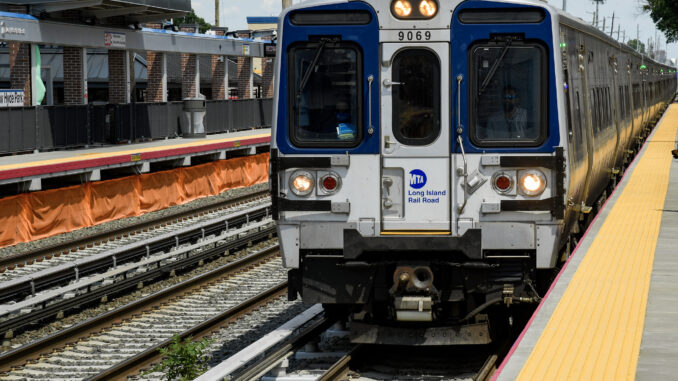
New York & Atlantic Railway (NYA) is once again participating in Operation Lifesaver’s See Tracks? Think Train® Week, taking place from September 15-21. This initiative aims to raise rail safety awareness and emphasizes the importance of making informed, safe decisions around railroad tracks and trains. As part of this important safety initiative NYA and Operation Lifesaver officials strongly encourage parents to speak with their children about rail safety and have them take the transit safety pledge at: https://oli.org/transit-pledge/kids
According to rail safety experts, more than 2,300 people are injured or killed in railroad crossing or trespassing incidents in North America, and See Tracks? Think Train Week (formerly Rail Safety Week) highlights the public’s role in preventing these tragedies.
Train tracks are specifically designed for trains and pose significant dangers to pedestrians and vehicles. The most common causes of rail-related fatalities are incidents and collisions at grade crossings. Over 60% of these collisions occur at crossings equipped with flashing red lights and/or safety gates.
“Rail is a safe and efficient means of transporting people and goods. At New York & Atlantic Railway, safety around the tracks is not only our top priority but everyone’s responsibility,” said Marlon Taylor, president of NYA. “Operation Lifesaver’s See Tracks? Think Train Week raises awareness about basic steps to prevent accidents and save lives.”
To stay safe around tracks, NYA offers five essential safety tips:
- Be alert. See Tracks? Think Train. Trains, especially commuter trains, can be faster and quieter than expected; do not assume the tracks are clear. Refrain from texting, using headphones, or engaging in other distractions that could prevent you from hearing an approaching train.
- Stop, look, and listen. Always stop before a railroad crossing, look down at the tracks in both directions, and listen for approaching trains. Follow all crossing signals and only proceed when it’s safe. Never walk or drive around lowered crossing gates. Cross train tracks ONLY at designated pedestrian or roadway crossings.
- Keep off the tracks. Train tracks are for trains, not pedestrians. Only cross train tracks at designated pedestrian or roadway crossings.
- Don’t get complacent. Freight trains don’t travel at fixed times, and passenger train schedules are often subject to change. And just because a train has passed doesn’t mean another may be passing in the opposite direction. Always expect a train.
- Trains cannot stop quickly. It takes the average freight train traveling 55 mph more than a mile — the length of 18 football fields — to stop.
The safety of our employees and the communities we serve is a core value ingrained in NYA’s culture. It is central to everything we do and is supported by some of the most extensive and rigorous classroom and field transportation training in the rail industry. As a leader in the short-line industry, NYA regularly provides railroad safety training to hundreds of first responders, including FDNY, NYPD, fire departments, and other public safety agencies in Nassau and Suffolk counties.
For more information about rail safety, or See Tracks? Think Train Week, please visit Operation Lifesaver’s website: www.oli.org.

